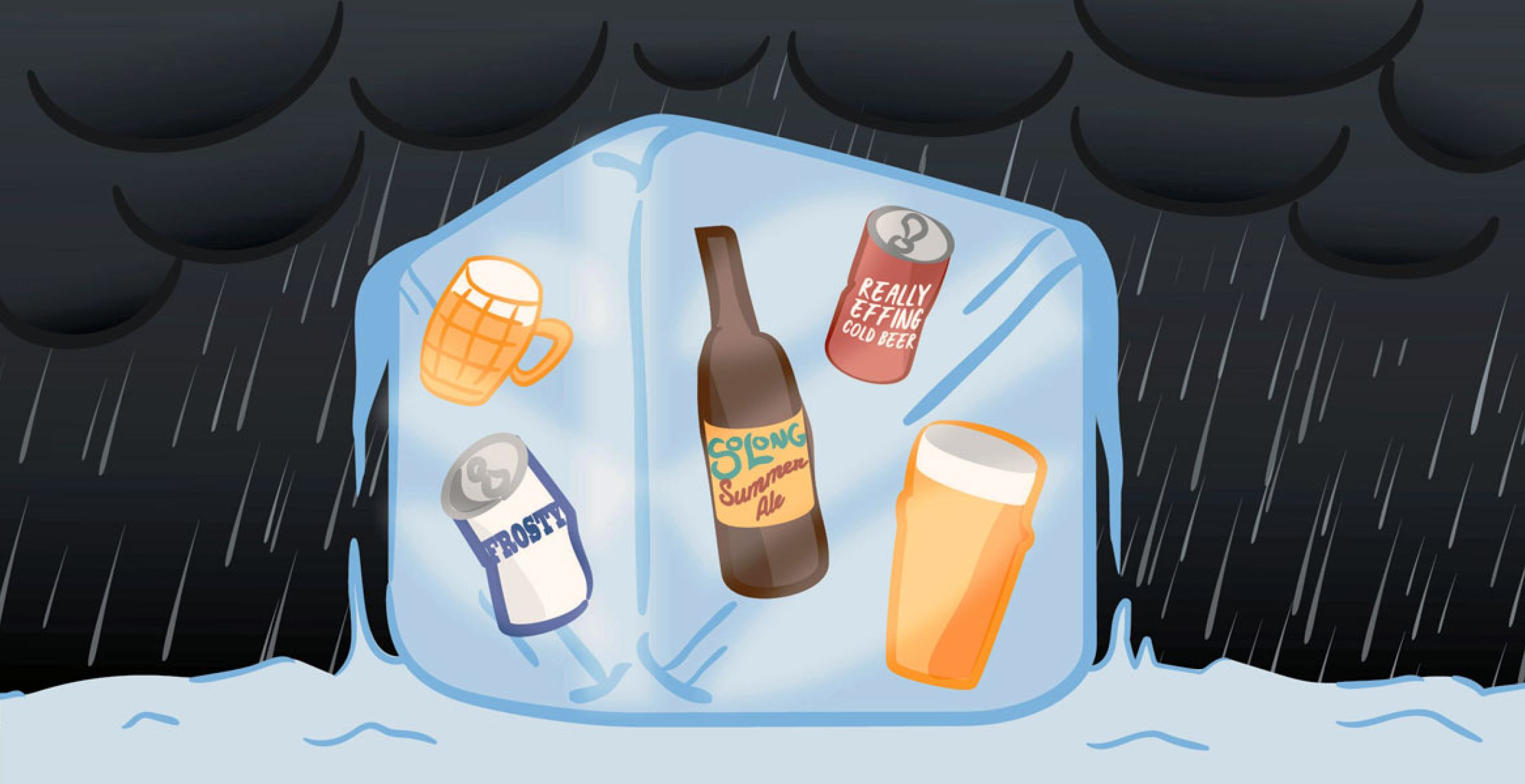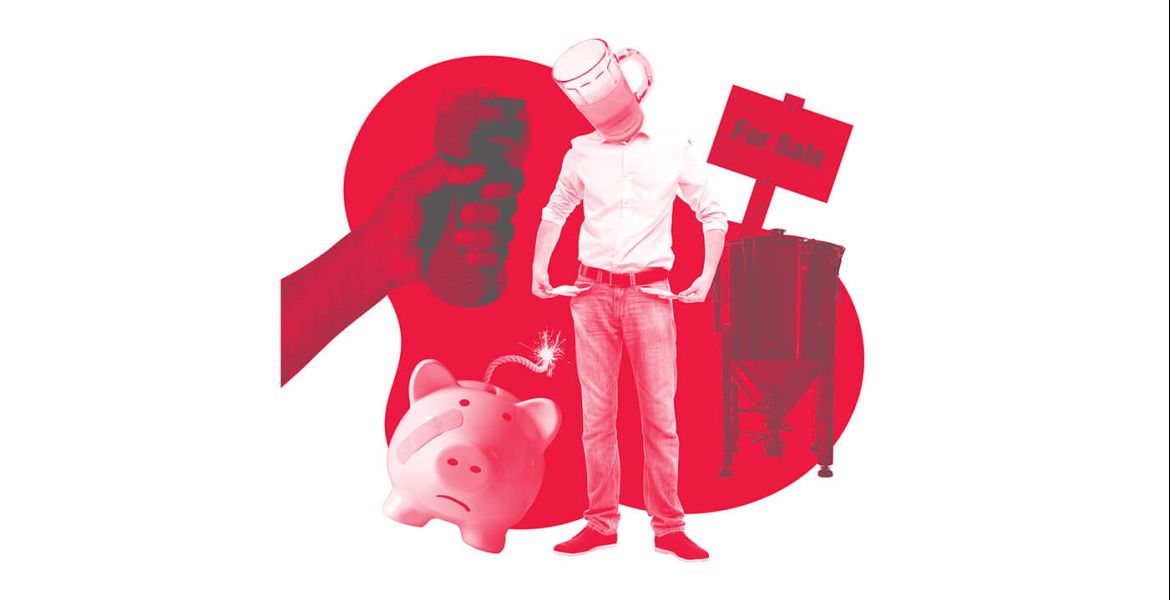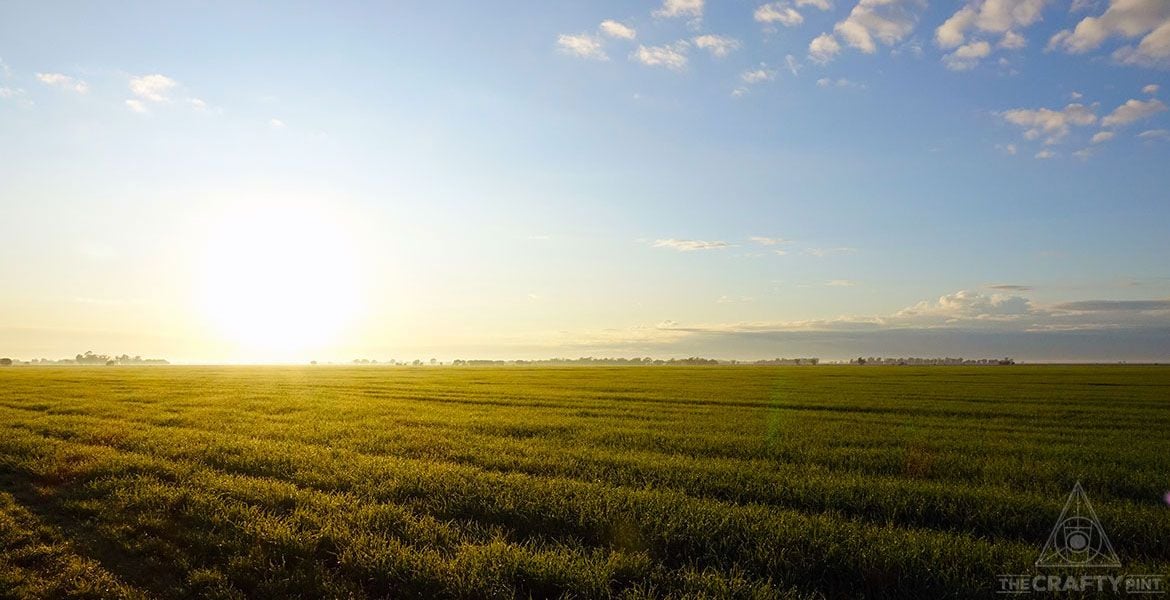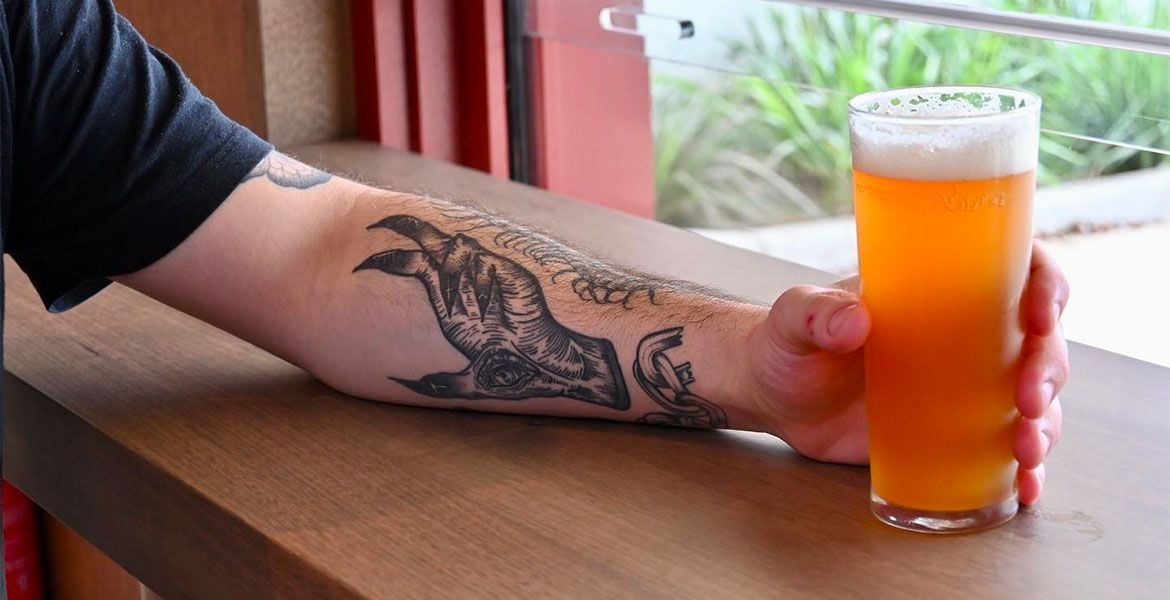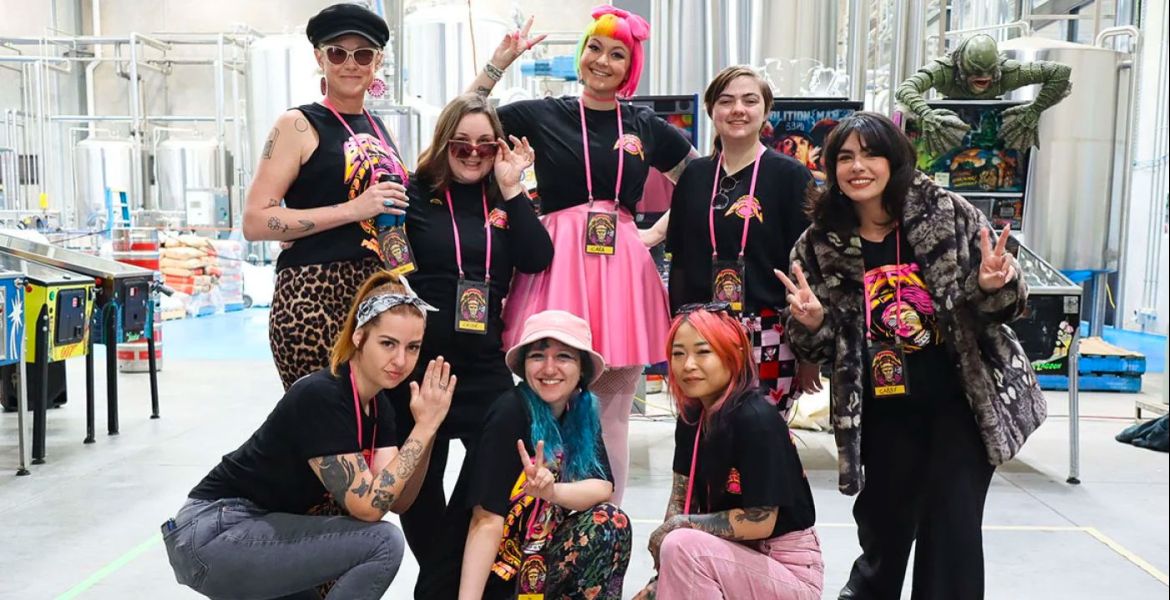Game of Thrones might be over but winter is still coming. It's traditionally the slowest time of the year for beer sales, when brewers have to tighten their belts while they await the return of warmer weather and, with it, our Pavlovian desire to consume more beer.
But will this winter be different – harsher – than those that have come before?
You don't have to be keeping too keen an eye on the local brewing industry to know there's far more brands on the market than ever before or that the number of brewing companies closing down, seeking investment of some sort, or put up for sale by their owners is on the rise too.
Already this year, Melbourne-based Sample have gone into administration, Canberrans lost both gypsy operation Pact and the industry stalwarts at the Wig & Pen, Bendigo's Brookes Beer and High Country-based Blizzard have been put on the market and others have been seeking new business partners or embarking on crowdfunding campaigns.
Go back a little further and you have the likes of McLeod Brewing closing on the Sunshine Coast, Barrow Boys winding down in Melbourne, or HopDog's owners selling up to focus on a venue instead – and there are plenty more examples too, often gypsy or contract brewers that have faded with little fanfare.
Of course, there are myriad reasons for businesses closing or seeking fresh injections of funding and manpower beyond feeling the squeeze. And, with so many brewing companies in operation, more closures doesn't mean the industry isn't faring well.
“There will be more because we’re coming off a larger base,” says André Sammartino, associate professor in International Business and Strategic Management at the University of Melbourne, who previously spoke to The Crafty Pint to discuss what Mornington Peninsula's sale to Tribe Breweries meant for the wider industry.
“So, if we’re coming up towards 600 brewers and one percent close down a year that’s six brewers. Whereas, in the past, if there was only 100 brewers then that’s just one brewer."
Yet, with talk about an increasing fierceness in competition building for years, could the squeeze and the impending freeze spell wider trouble for the country's small brewery owners?
Maybe, according to some beer industry experts we consulted, especially if you've not got your business in good shape. At the same time, on the back of the publication of the most solid figures describing the size of the independent sector in Australia, there's confidence there's still plenty of room for both growth and newcomers – if the model is right.
A Rosy Picture

The figures in question were unveiled by the Independent Brewers Association (IBA) during the recent Good Beer Week and featured data not previously used in analyses of the beer industry.
By sourcing information from the Australian Tax Office, the IBA was able to calculate that indie brewers were responsible for almost six percent of market share by volume and ten percent by value, something association chair Jamie Cook, a co-founder of Stone & Wood, says shows people are willing to spend more for authentic, quality products.
“It means people are prepared to pay more, which is encouraging and is a good reason why retailers should be supporting independent beer – they can make more money,” he says.
“More retailers are realising this is where consumers are going. You’ll see continued growth but how well that is shared is going to be hard.”
As well as being a beer fan and academic, André is an optimist; well, when it comes to our local craft beer scene anyway. He points to the IBA's figures, the fact that breweries of different sizes are growing, and the potential for new breweries to open in so many parts of Australia as signs there’s more growth to come.
“I’ll put my optimistic cards on the table,” he says. “I think you and I could be sitting here in five years’ time with there being close to a thousand breweries in Australia and I don’t think I would even be worried at that point.”
Certainly, while some have ceased operating and others are looking to reboot in one way or another, there are plenty opening every month and more in planning. Take the Sunshine Coast, for example: one brewery less than five years ago and closing in on 15 now.
Jamie says one reason for the growth in brewing companies is that some of the high barriers to entry have been reduced, making it easier to have a voice and gain some volume in the market. However, he warns that the barriers to success in what's always been a competitive industry remain.
“It's a very concentrated route to market that's difficult to navigate,” he says.
“To survive out in wholesale you need to have a very strong brand with consumer pull [and] have to be prepared to invest in that area. Retailers get a lot of support from the big breweries so want to see that replaced [if they’re going to switch to independents].”

He says the industry is now of a scale that brings fresh challenges too.
“We will see a standard bell curve around performance – a small number of successful businesses at one end, a large chunk doing OK in the middle, and a small number at the other end that are struggling,” he says.
“We're going to see those ones that are struggling fall away, ones that aren't set up right from the get go might not succeed, but also some that look quite successful will fail as well.”
Businesses at risk will be those that are financially unviable or undercapitalised.
"They get so far and then run out of cash. Or the founders decide they want out because of fatigue or [the business has] outgrown them or they don't have the ability to grow it," he says, citing the example of the homebrewer who decides to bring their beer to market only to find themselves running a small business instead.
"They go, 'This isn't the dream. I just want to make beer'," he says.
"Then there will be those who can't fund growth. This is one of things people don't really understand: the capital-intensive nature [of starting a brewery].
“They start by bringing in investors to get up and running. Off they go and expect within the next year or so they’ll profitable and paying back investors and it's happy days. If you’re successful, it doesn't mean you will actually have cash to give back to investors; all that profit is going back into equipment and stock and inventory.”
Add in factors such as a 90-day wait to get paid if you're selling into the major retailers and cash flow soon becomes an issue if you're not prepared. With investors often wanting to see a return, going back to those same people and asking for more might not work out.
“You got to start building a sustainable business from day one,” Jamie says.
Securing Taps And Shelf Space
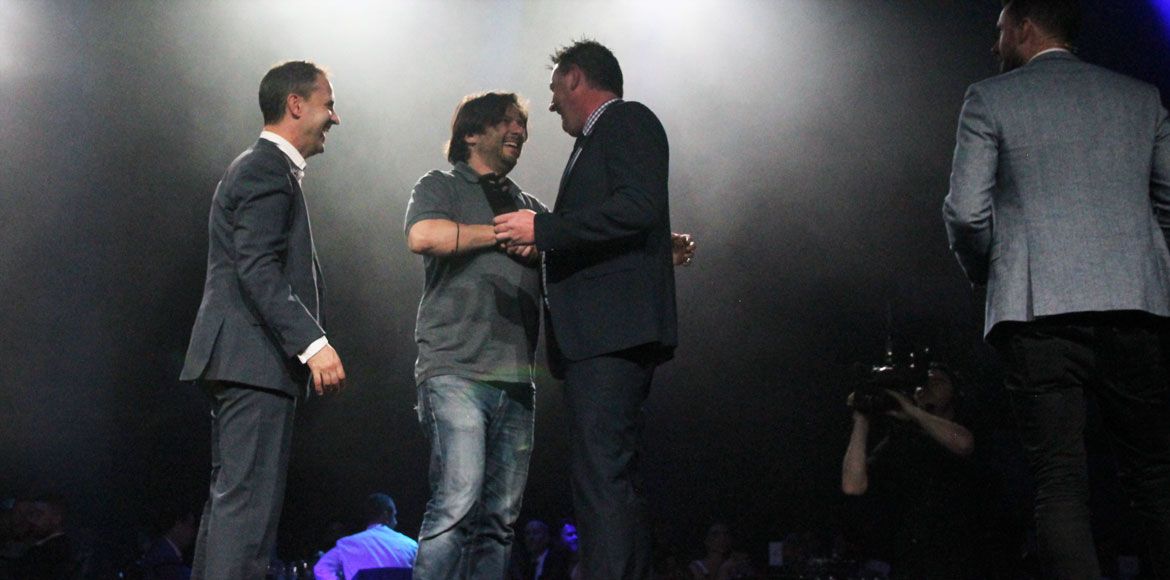
Unless you're selling the majority of your beer in your own venue(s), according to Mazen Hajjar, CEO of Melbourne-based Hawkers, the key to success remains distribution. It's an area in which he says the major brewing companies retain a stranglehold, one he believes has only been reinforced by the July 2017 decision of what he calls "the incompetent, underfunded ACCC" when they declared practices such as tap contracts did not "substantially lessen competition".
As well as overseeing one of the larger independent brewing companies in Australia, the Hawkers brewing team brews beer for a number of others, giving Mazen a broader view of the market, one augmented by his experience building brands overseas and selling into export markets.
For those playing in the wholesale market that don't have everything right – funding, resources, expertise, branding, quality and in-demand beers – he says there's a temptation to follow one of a few routes.
"You're involved in a price war. Or you’re constantly rotating through what's new and what's cool," he says. "You buy taps or you have very cheap beer or you have something new every week.
"This is where the industry is being driven right now and it's very unfortunate. It's not healthy for the quality of beer. If you are driving beer on price, you're not really thinking about quality. If you are rotating, you’re never fine-tuning your recipes as you’re always coming up with what's next.
"The cost of doing business is very high [when producing new beers all the time] and even if you are driving low costs, you've got to show up more often to the venue [to keep selling them your new beers] so your sales rep costs are high: it might be two, three or four visits to get two or three kegs on tap."
It's a situation that's a symptom (and, maybe, also a cause) of the rotational tap policy practiced by many craft beer venues.
Says Jamie: “The rotating tap thing has given some people a head start in the short term but ongoing it doesn't give them any distribution. You can sell a mixed pallet to 25 venues in a month but what about the next month? As opposed to having 25 venues permanently pouring your beer.
“It's OK while you’re flavour of the month but what about when the next one comes along?”
Mazen says it's starting to apply to bottleshops too; they might be willing to free up more fridge space for craft beer but staff are also fielding dozens of reps week in, week out.
"If you are the next startup of three dudes who decide to have a brewery, that shit has been done to death so many times," Mazen says. "You need more to justify your space. It seems really unfair as you're so passionate, but you and the other 500 breweries have the same story, so what sets you apart?
"Even if you get in, you need to create a pull off the shelf. You might get into 50 bottleshops but if no one picks [your beer] up and it sits for a while and deteriorates and adds to the perceptions of quality that we already have, it isn’t doing your brand any favours."
The Model Brewer
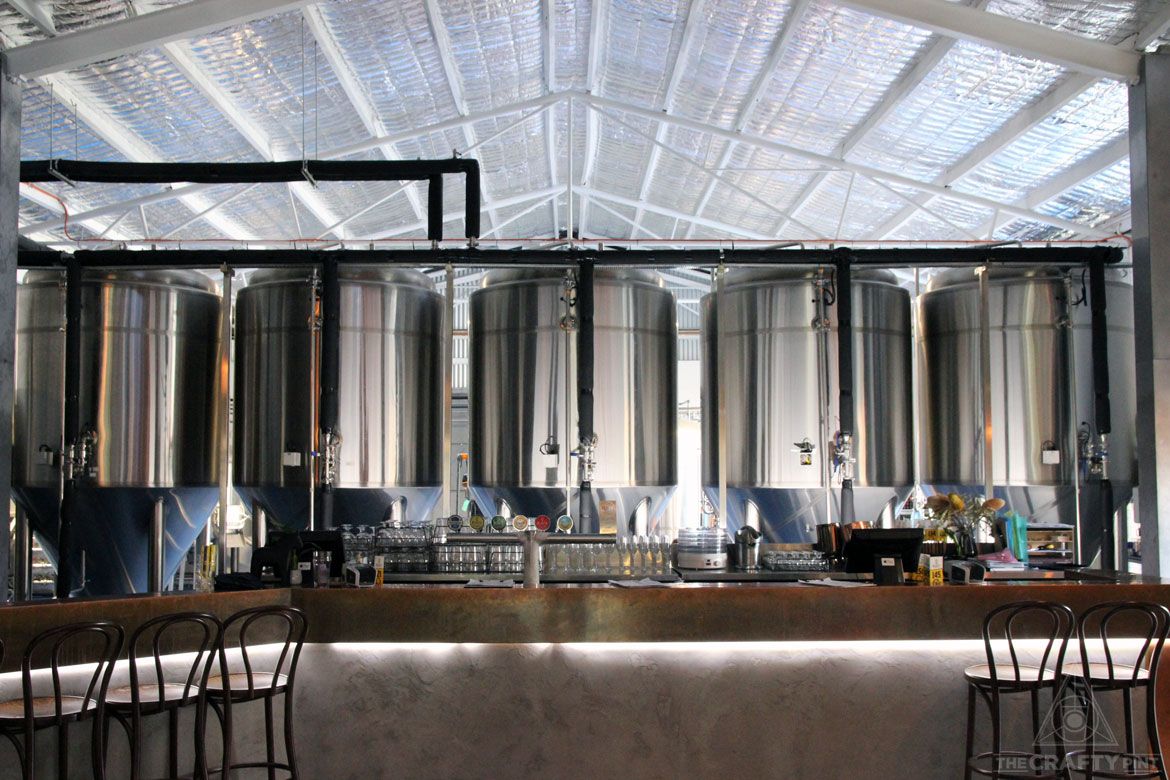
Over the past four years, The Crafty Pint has hosted Brewery Startup Panels with Cryer Malt across the country. In the last year, the vast majority of attendees have said they plan to open brewpub style operations and it's here you'll find widespread agreement on the viability of such a model.
André says in America the growth in the number of brewing companies to more than 7,000 has been largely driven by brewpubs, a model he thinks works well here too: owners control their taps and get to engage customers directly.
The examples of Sydney's Inner West, the area around Collingwood and Abbotsford in Melbourne, or some of the suburbs circling Brisbane's CBD suggest high concentrations of brewery venues can work well. And there are plenty of examples from the States to support this theory too.
"I've been to towns in the US, like Hood River, where there's 12 breweries for something like 6,000 people," Mazen says.
"Or there's Bend where they have 10 Barrel, Crux [Fermentation Project] and Deschute – 21 breweries for 50,000 people."
The brewpub model is one in which Jamie sees the value too; the Fermentum group of which Stone & Wood is part includes Fixation, which now operates a taproom in Collingwood, and is set to open a Stone & Wood brewpub in Fortitude Valley later this year.
“There's a strong role to play for brewers who have realistic ambitions and operate out of a taproom – providing they are good hospitality operators," he says, warning that the model will have to evolve over time from the well worn combo of shiny stainless and German style long tables.
"That's OK for a while," he says, "but the quality of the hospitality experience is something that will have to lift.”
As for those taking the gypsy approach, it can offer a low cost way into the commercial world, but it's also the model where more brands have ceased to operate than any other. Two of the three Champion Gypsy Brewery trophy winners at the Australian International Beer Awards to date, Pact and BrewCult, have since called it a day.
André says it can be harder to track gypsy or contract brands than those with physical breweries, as the latter are more likely to announce their closure and put their brand and equipment up for sale. But he has noticed a slowdown in the number of new contract brands entering the market in the last year and a rise in the number of exits.
Mazen has worked with a number of gypsy and contract brewers over the past four years, brewing for Pact when they won their trophy and for the most recent Champion Gypsy Brewery, Philter, too.
"Gypsy brewing is a good way to start off your business," he says. "You can get brand position and it can be a great way to raise money if you want to build a production facility. It’s a low investment way to get to the market.
"Gypsies fail if they don't have any brewing acumen and think they can build volume and CUB will come in and buy them. Or they have other jobs and don't commit to it 100 percent: they just add $20 on top of the keg price and have some fun.
"Or they don't think through the cash flow implications: you pay your supplier for your beer, you spend money on marketing and warehousing or put your beer into Dan’s then you wait to get paid. And then you buy more beer."
He says there are gypsy operations that will have made a lot of money but still won't be paying the founders a salary.
"The owners end up stuck in their old jobs," he says. "The business is doing well but it needs focus to push it to the next level. They see that they are making money but not taking any home. They still have to run a business without being paid and manage their other jobs."
Future Proofing

While overall beer consumption in Australia is falling, craft beer is on the up, particularly for independents. The IBA figures showed a 25 percent year-on-year growth to June last year, suggesting drinkers are clearly changing their behaviour with regards to the beer they want to buy.
“It’s the best evidence I’ve seen that we are talking about a significant consumer shift,” André says.
On the back of the encouraging figures, Jamie says: "I still think there's good growth ahead of us." And, with his IBA hat on, points out there will be a stream dedicated to "surviving and thriving" at September's BrewCon in Melbourne.
"Surviving isn't a negative," he says. "It's how you go about surviving the first couple of years."
Mazen, for one, still wants more, however, describing the current market share as "a joke" and suggesting growth is happening "despite the market conditions and not because of some market revolution".
He wants to see a "loud and vocal" IBA being more responsive to what he calls "the real issues", such as market access and excise.
"We need to invest in educating publicans about the benefits of having independent beer on their taps and the damage that contracts can do," he says. "We need to continue to improve quality and be conscious that we still have 94 percent of the market that haven’t converted."
As for anyone experiencing tough times or worries they might lie ahead, he says: "It's time to really think about what is making it tough. Are you finding it difficult to compete for shelf space and get consumer eyeballs? If so, maybe it's time to put in your own bar.
"Maybe it's time to think about the quality of the beer you're putting out and what type of beers you're putting out [as] the market has evolved.
"The focus should be on who you are and not just being driven by the pointy end because, ultimately, those beer geeks aren't really the guys who pay your rent. Question who you are and what you want to do and what you want to stand for.
"You can name some breweries – Blackman's, Sailors Grave, Mr Banks – and you know who they are and what they stand for. They do what they do and do it well. A lot of breweries are chasing their tails trying to follow the next trend."
But, should winter bring anyone to their knees, who is it likely to be? Which brewing models are likely to be most at risk?
Trying to make such predictions, according to André, is a mug’s game; in the broader world of business, companies collapse all the time for a variety of reasons.
“As much as someone will get it right about who gets bought next and someone gets it right about who fails next, it’s not because they’ll have the insight," he says. "It’s because if you throw enough darts, you’ll hit the target.
“Companies fall over, if we knew which ones where going to then investors would never lose money – but they do.”
The next Brewery Startup Panel takes place as part of the WA Brewers Conference on June 28. You can find out more and book your place here.
Crafty Cabal members can enter a ballot to win tickets too.

